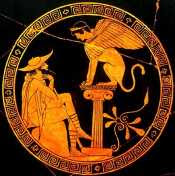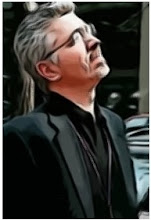Around line 370, the Chorus in Antigone declaims one of the most famous stasimons known in Classical Greek Drama:
Chor. Many the forms of life, 368
Fearful and strange to see,
But man supreme stands out,
For strangeness and for fear.
He, with the wintry gales, 372
O’er the foam-crested sea,
’Mid billows surging round,
Tracketh his way across:
Earth, of all Gods, from ancient days, the first, 376
Mightiest and undecayed,
He, with his circling plough,
Wears ever year by year.
ANTISTROPH. I
The thoughtless tribe of birds, 380
The beasts that roam the fields,
The finny brood of ocean’s depths,
He takes them all in nets of knotted mesh,
Man, wonderful in skill. 384
And by his arts he holds in sway
The wild beasts on the mountain’s height;
And brings the neck-encircling yoke
On horse with shaggy mane, 388
Or bull that walks untamed upon the hills.
STROPH. II
And speech, and thought as swift as wind,
And tempered mood for higher life of states,
These he has learnt, and how to flee 392
The stormy sleet of frost unkind,
The tempest thunderbolts of Zeus.
So all-preparing, unprepared
He meeteth naught the coming days may bring; 396
Only from Hades, still
He fails to find a refuge at the last,
Though skill of art may teach him to escape
From depths of fell disease incurable. 400
ANTISTROPH. II
So, gifted with a wondrous might,
Above all fancy’s dreams, with skill to plan,
Now unto evil, now to good,
He wends his way. Now holding fast the laws, 404
His country’s sacred rights,
That rest upon the oath of Gods on high,
High in the state he stands.
An outlaw and an exile he who loves 408
The thing that is not good,
In wilful pride of soul:
Ne’er may he sit beside my hearth,
Ne’er may my thoughts be like to his, 412
Who worketh deeds like this.
The questions I want you to answer for Thursday are:
- - according to the Chorus, what makes Man (or humans) so great?
- - does the chorus recognize any limits to Man's (or humans') greatness?
You shouldn't take more than one or two typed pages to answer these questions. Think about the Chorus's exclamations here in relation to the whole of Antigone.
Enjoy!
Prof. H.















